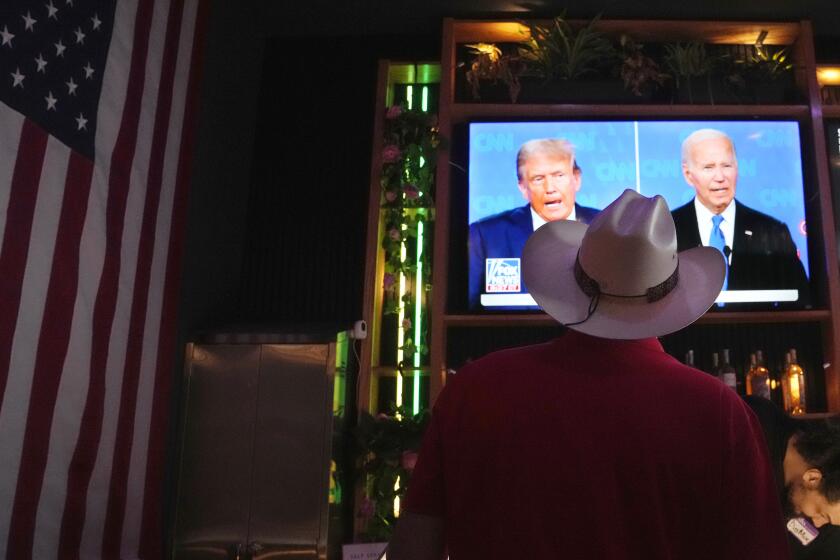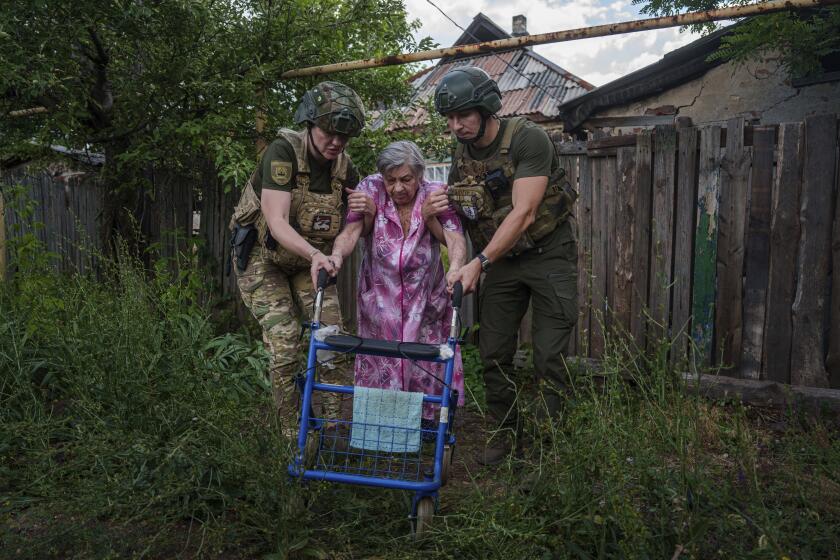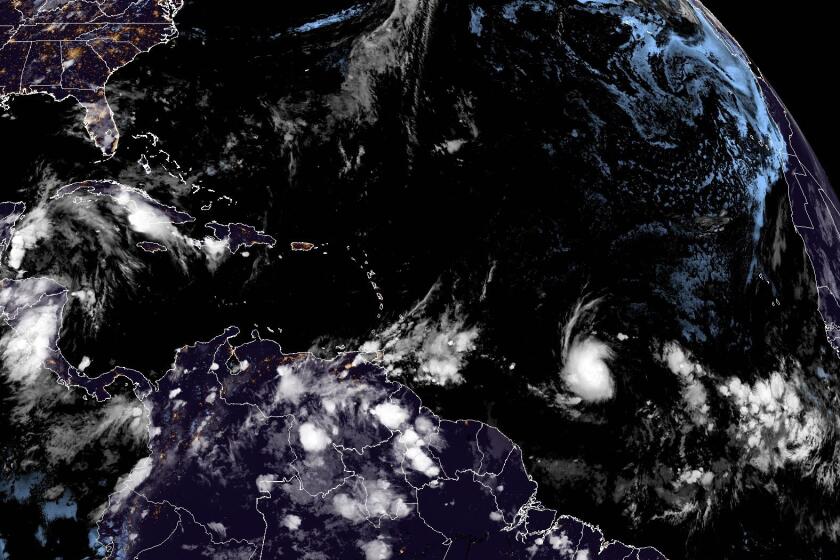Still Fighting to Survive
Pearl Harbor survivor Frank Garten sat alone in the dimly lit basement bar of American Legion Post 132 in Orange. Across the room, another elderly veteran perched on a stool smoking a cigarette and nursing a beer.
The nearly empty hall illustrates a trend seen across the nation: Fraternal groups that blossomed after World War II are now fighting for survival.
“Most of us who carried this post were World War II vets, but we’re dying off,” said Garten, 77. “I can remember when this place used to be packed on Friday nights.” Post 132 claims 500 members, but only a handful of men show up for meetings.
Garten and other World War II veterans make up the core membership of organizations like the American Legion and the Veterans of Foreign Wars--fraternal groups that welcomed fighting men home from wars and offered them companionship and an opportunity to serve their communities.
But as the number of World War II veterans dwindles, so does membership in these two venerable groups. American Legion and VFW membership nationally declined 24%, to 3.9 million, from 1995 to 1998.
In an effort to reverse declines in membership, leaders are taking a number of steps, such as allowing sons of veterans to join even if they have never served in the military.
They also are reaching out to Vietnam War veterans who have traditionally been more concerned with Agent Orange and MIAs than with blood donations and volunteer work. That effort is hampered, officials admit, by bad blood dating to end of that divisive war.
According to the American Legion’s statistics, membership has dropped from 3 million in 1991 to 2.8 million in 1997. Last year’s membership figures include 250,000 “Sons of the American Legion,” young men who never served in the military but are the sons of veterans, said Legion officials at the organization’s Indianapolis headquarters.
Legion spokesman Lee Harris said more than 1,500 posts have disappeared in the last 16 years. As of this year, there were 14,862 Legion posts, with World War II vets accounting for 45% of the membership, Korean vets 23% and Vietnam vets 27%, Harris said.
The numbers are just as disappointing for the VFW. Membership has dropped from 2.1 million in 1994 to 1.9 million this year, said spokesman Bill Smith in Washington. World War II vets make up 50% of the VFW membership, Korean vets 15% and Vietnam vets 35%, Smith said. Since 1994, the number of VFW posts has declined from 10,777 to 9,898.
While the numbers continue to decline, figures from the Department of Veterans Affairs show there is still a large veterans population in the United States--25.4 million. California has more veterans than any other state--2.7 million, according to the government’s figures.
Yet despite California’s large veteran base, only 145,000 belong to the American Legion and 111,000 to the VFW in the state, said spokespersons for the groups.
Charles Moskos, an Army veteran and Northwestern University sociologist who studies veterans and the military, said the two fraternal groups were among the most notable secular organizations of their time, reflecting a period in American history that will probably never recur.
“As World War II veterans die off, so will the end of an era,” Moskos said. “They represent a time in our history when E pluribus unum was really true.”
Howard Darter, a Vietnam veteran and American Legion official in Southern California, said he knows why Vietnam vets have ignored the Legion and VFW.
“The truth is that when Vietnam vets came back, they were shunned by the Legion and other veterans groups. They were looked down upon,” Darter said.
“The wall started coming down about 15 years ago, but for some Vietnam vets the wall will always be there. They can’t forget how they were treated,” he said.
Servicemen returning from World War II were seen as “coming back a better person because they helped save democracy,” Moskos said. “The general feeling among many Americans was anyone who returned from Vietnam was a bad person, into drugs and disassociated from society.”
John Lynch, an Army veteran who is secretary of the Vietnam Veterans of America Chapter 785 in Orange County, said that he has no interest in ever joining the American Legion or VFW.
“It’s not because I don’t believe in what they do. But the VVA’s work reflects more of the issues and opinions which I as a Vietnam vet am interested in seeing addressed,” he said. Those include the plight of homeless vets, Agent Orange and an initiative to help Vietnamese families in Vietnam locate the remains of missing soldiers.
“We don’t have halls or bars, where guys go to drink. We don’t do any of that,” Lynch said. “We come to meetings ready to discuss issues that are of importance to Vietnam vets and their families.”
Garten, the WWII vet, said he does not resent Vietnam vets for not joining the Legion.
“You can’t blame those guys for feeling that way. People frowned on them, and they didn’t want to belong to anything where they weren’t wanted.”
While declining membership is seen everywhere, it may be most keenly felt in small towns where the VFW and American Legion halls have been mainstays of community activity.
American Legion Post 355 in the Central Valley farming community of Kerman--population 7,000--is among those closing down, said acting post commander Clinton Villines, 72.
“We’ve got 67 members, but most of us are World War II vets,” said Villines, an Army veteran. And those older veterans “are too old or sick to drive to meetings. We have about 500 veterans living in the area, but nobody wants to join. You can’t make them join if they don’t want to.”
Disappearing along with the post will be its volunteer efforts, ranging from the annual sponsorship of a local student delegate to Boys State to holiday parties for local children to a new flagpole in front of the town’s senior citizens center.
“We can’t continue to do give back to the community without any members,” Villines said. “I think Kerman will be missing out.”
(BEGIN TEXT OF INFOBOX / INFOGRAPHIC)
Thinning Ranks
Fraternal organizations that serve veteran primarily from World War II and the Korean War, such as the American Legion and Veterans of Foreign Wars, are fighting to stem a decline. Membership in the two organizations dropped 24%, to 3.9 million, from 1995 to 1998. change in the number of posts nationwide:
Source: American Legion, VFW; Researched by H. G. Reza / LOS ANGELES TIMES
More to Read
Start your day right
Sign up for Essential California for news, features and recommendations from the L.A. Times and beyond in your inbox six days a week.
You may occasionally receive promotional content from the Los Angeles Times.






